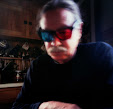Easily the most widely adopted technology at UW Oshkosh is projecting some sort of computer image in the classroom. Anyone who has been using them has probably noticed that the image on a lot of the projectors has degraded significantly. The good news is we have discovered that many, but not all, will be able to be restored to almost like-new condition.

This story mainly involves the NEC GT950 model, which you may recognize as one of the smaller projectors hanging from the ceiling in many classrooms. In 2002-2004 funds from several special sources became available and we added 44 of these machines in new technology classrooms, on carts distributed from our Instructional Technology Centers, and used them to replace some of the earliest installed projectors. The GT950 represented a new class of mid-range projectors that at $4000 were significantly less costly than their bigger brother, the GT 1150, that we had been installing at $8000 apiece (The latest projectors we're installing are about $3000). They were just about as bright and have some clever image shifting features that gave us more flexibility in where the projector needed to be placed. Very handy especially for projectors being rolled into classrooms full of tablet arm chairs.
Seven years down the road, we faced the very scary prospect of having to replace this large number of these machines in a very different fiscal climate. To make matters worse, these GT950's were not aging well. Their overall brightness was dropping and annoying large pink splotches were developing on the image. Based on our experience with older projectors, this was probably due not only to dust and dirt, but also to the aging of the LCD's that create the image in the rather warm environment in the beam of a powerful lamp. As you might guess, parts are not available for a seven year old projector–ancient in the fast moving projector market.

LCD projectors are fiendishly complex devices. The beam from the lamp is split by partial reflecting mirrors into three beams, directed around two to three turns with mirrors, through three separate LCD's and polarizing filters, one each for red, green and blue components of the image and recombined and directed through the lens with prisms. This involves very precise alignment on more than a few parts. The engineers who design these things do not generally take great pains to put them together so they can be taken apart, and then reassembled with everything in alignment.
We have discovered, however, that this particular model can be cleaned to restore the image to practically new condition. Because of the large number of these 950's in our collection and the relatively poor image they were delivering, Gary Vandre, one of our electronics technician, started pulling them apart and discovered that virtually every optical surface was accessible and the parts were able to be reassembled with everything still lined up. The pink splotches are gone, and the brightness renewed to almost new condition.

It's not perfect. On most of them the aging of the LCD's is noticable as a green cast in the lower left of the image, probably due to the green LCD being closest to the lamp. Also in rooms with heavy chalk use, the chalk dust is almost impossible to clean off the optical surfaces. The cleaning technique is to blast them with compressed air. Actually touching them and trying to clean the chalk dust off with windex and even the best lens cleaning cloth would scratch these delicate surfaces and knock them out of the perfect alignment need to create a sharp image.
We hope to get to all those projectors we can clean before fall, so the images in your classrooms should be improving soon, and now we know which projectors to concentrate our replacement efforts on and which we can keep in service to smooth out that projector population boom of 2002-2004.





No comments:
Post a Comment